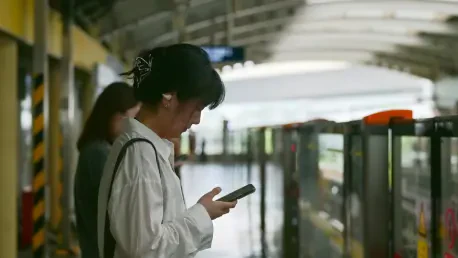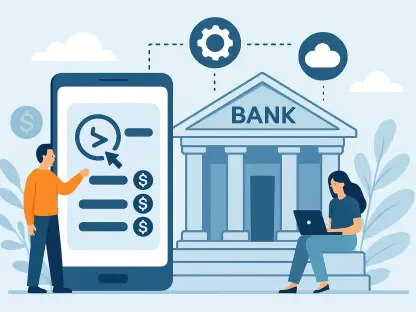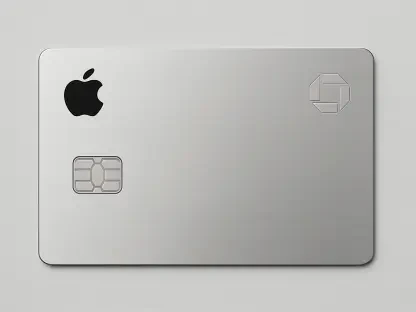As U.S. public services increasingly transition to digital-only payment systems, a significant shift is underway, greatly accelerated by the COVID-19 pandemic’s push for convenience and efficiency. While many benefit from this digital evolution, not all are equally equipped to embrace it. Vulnerable groups, notably seniors and low-income families, find themselves at odds with a system that prioritizes technological means over traditional cash transactions. This change presents a double-edged sword, offering streamlined operations while amplifying barriers for the tech-averse and financially underserved. The dynamics at play pose critical questions regarding financial inclusion and digital privacy.
Digital Transactions in Public Transit Systems
Smart Cards and Mobile Apps: A New Norm
In cities like New York, Los Angeles, and Washington, D.C., the complete shift to cash-free public transit has seen the rise of smart cards and mobile applications. By eliminating cash, transit authorities aim to reduce fare collection times and enhance operational efficiencies. However, individuals unprepared for this digital wave, including tourists, seniors, and low-income riders, now face significant access challenges. The instantaneous nature of digital payments can accelerate travel efforts, but for those without smart devices or digital literacy, barriers grow steeper.
For many, smart cards and apps offer undeniable convenience, but not without drawbacks. Tourists unfamiliar with local systems may find themselves stranded without the requisite apps. Seniors, often less tech-savvy, could feel excluded from mobility they once freely enjoyed. Low-income individuals, struggling to manage daily expenses, may be unable to afford the necessary digital tools. As transit systems press on toward an entirely cashless future, the need to balance innovation with inclusivity becomes increasingly urgent.
Bridging the Digital Divide
While digital payment modes streamline public transportation, addressing the digital divide is critical. For instance, facilitating access to inexpensive mobile devices or providing free Wi-Fi on transport platforms could enhance digital inclusiveness. Initiatives promoting digital literacy, focused on vulnerable populations, would mitigate tech challenges. Programs designed to offer discounted smartphones or free data access would prove beneficial, ensuring wider accessibility for necessary transit services.
Community partnerships, with targeted educational campaigns, promise progress in bridging this divide. Locally targeted workshops could empower seniors and tech-averse users, providing them with the skills needed to navigate a digital transit ecosystem. By facilitating greater tech adaptation, public authorities could minimize the exclusionary aspects that a digital shift entails. As cities pursue cashless systems, they must incorporate elements ensuring that this transformation leaves no one behind.
The Rise of Cashless Operations on Toll Roads
Transition to Electronic Transponders
Cashless toll systems, leveraging electronic transponders like E-ZPass, offer undeniable speed and efficiency for drivers accustomed to digital transactions. As toll booths across the nation are supplanted by electronic systems, travel times decrease and vehicular flow improves significantly. Yet, this shift towards a fully electronic model is not without its challenges. Individuals lacking access to these transponder systems face increased fines or fees, emphasizing the economic disparities embedded in digital-only practices.
Many drivers find themselves inconvenienced by a lack of alternatives, with traditional cash lanes becoming increasingly scarce. Meanwhile, those unable to afford the upfront cost of acquiring transponders may incur punitive fees. This digital transformation inadvertently prioritizes those with financial means, further straining individuals already struggling under economic constraints. Although electronic transponders improve toll system efficiency, structural imbalances risk penalizing the unbanked or financially vulnerable drivers.
Addressing Access and Affordability Challenges
Strategies addressing affordability and accessibility can counteract barriers within cashless toll networks. Governments could consider reduced fees for digital transponders or subsidizing equipment costs for low-income drivers. Additionally, developing systems that allow one-time digital payments through apps or secured websites could offer immediate alternatives for unbanked individuals or those resistant to long-term transponder commitments. By offering more inclusive solutions, toll authorities can extend digital conveniences without ostracizing financially challenged users.
Implementing innovations like toll payment kiosks with digital assistance features might facilitate greater access. Public programs aimed at raising awareness about digital toll systems, combined with inexpensive rentals, can promote equitable toll access. As toll roads evolve into a seamless future, ensuring that each commuter receives equitable service remains fundamental. Balancing technological progress with universal accessibility should guide sustained policy improvements.
The Decline of Cash in Utility Payments
Online Payment Systems Displacing Cash Options
Utility services, essential aspects of daily life such as water and electricity, increasingly embrace online payment solutions, phasing out traditional in-person cash transactions. Through enhanced digital platforms, utilities achieve operational efficiency, reduced risks from cash handling, and improved revenue management. Still, many unbanked individuals or seniors lacking digital aptitude face access hurdles, challenging their ability to pay crucial utility bills without technological support.
Despite intended advances, this digital transition can exacerbate service disparities for populations unable to leverage online financial tools. Utility companies discontinuing cash payments inadvertently exclude those unaccustomed to or unable to afford digital pathways. The shift emphasizes the necessity of digital inclusivity for critical services, prompting utilities to strike a balance between progressing operational efficiencies and ensuring affordability and accessibility for all customers.
Solutions for Encouraging Inclusivity
To retain inclusivity, utility companies must pursue multifaceted approaches that integrate cashless operations while maintaining viable options for cash-dependent customers. For example, offering payment options at locations with self-service kiosks or partnerships with local businesses can facilitate cash payers. Furthermore, embedding personnel to assist customers with navigating the utility’s digital interfaces fosters greater participation within digitally designed ecosystems.
Educational programs backed by utility providers could impart digital skills to those struggling with technological challenges. Also, introducing mobile units to help seniors and unbanked individuals with utility payments encourages outreach and engagement. These measures can mitigate barriers faced by a demographic reliant on face-to-face interactions. As utility companies fully integrate digital systems, ensuring wide-reaching inclusion becomes imperative to mitigating barriers across service delivery mechanisms.
Rethinking Cashless Approaches in Public Services
The Broader Implications of Going Digital
The nationwide pivot to digital-only public services characterizes a broader and increasingly debated movement towards cashless societies. While digital payments promise improvements in speed, efficiency, and minimized risks, this shift raises significant concerns about privacy, financial exclusion, and socio-economic disparities. The implications of digital reliance on financial inclusion remain profound. Questions persist on appropriate methods to cater to populations inherently marginalized by cashless endeavors. Privacy issues arise, with digital transactions subjecting individuals to surveillance and data collection by organizations and third-party vendors.
Navigating these broader implications requires a nuanced understanding of the evolving dynamics shaping cashless public services. Crafting inclusive strategies involves reconciling innovation with safeguards that address privacy and access concerns. It warrants dialogue on the socio-economic worthiness of fully digitizing public domains—a matter of examining digital inclusion and privacy under a microscope of ethical consideration.
Ensuring Equitable Access for All
As public services in the U.S. increasingly transition to digital-only payment systems, we’re witnessing a major shift significantly accelerated by the push for convenience and efficiency during the COVID-19 pandemic. This digital transformation streamlines operations for many, yet not everyone can easily adapt. Vulnerable groups, like seniors and low-income families, often struggle with this transition, as the system increasingly favors technological solutions over traditional cash transactions. This creates a double-edged sword—while digital systems can simplify processes, they also exacerbate the difficulties faced by those who are less tech-savvy or financially constrained. This situation raises important questions about financial inclusion, as these groups risk being left behind. Additionally, moving toward digital payments brings up concerns regarding digital privacy. Balancing the benefits of digital payments with ensuring that all citizens can participate fully and securely is a pressing challenge in our increasingly tech-driven world.









